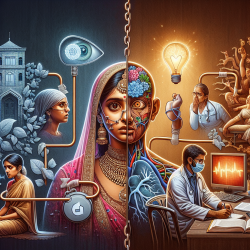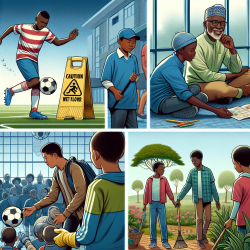Introduction
In the rapidly evolving field of neurosurgery, the integration of augmented reality (AR) and virtual reality (VR) is transforming surgical procedures, particularly in awake craniotomy (AC). These technologies offer innovative solutions for complex surgical challenges, enabling precise brain mapping and enhancing patient outcomes. This blog explores the findings of a systematic review on the use of AR and VR in AC, highlighting their potential to improve surgical precision and patient care, particularly for pediatric populations.
The Role of AR and VR in Awake Craniotomy
AR and VR technologies have emerged as powerful tools in neurosurgery, offering immersive environments for both surgeons and patients. In AC, these technologies facilitate real-time brain mapping, allowing for the precise identification of eloquent brain areas responsible for critical functions such as language, vision, and social cognition. The systematic review analyzed six studies involving 118 patients, demonstrating the successful application of AR and VR in enhancing surgical precision and patient satisfaction.
Key Findings from the Systematic Review
- Enhanced Brain Mapping: VR was utilized for intraoperative mapping of language, vision, and social cognition, providing a comprehensive understanding of the brain's functional areas.
- Preoperative Training: AR was employed for preoperative training, aiding surgeons in visualizing complex anatomical structures and planning surgical interventions.
- Patient and Surgeon Satisfaction: Both patients and surgeons reported high levels of satisfaction with the use of AR and VR, citing improved surgical outcomes and reduced cognitive load during procedures.
Implications for Pediatric Outcomes
The integration of AR and VR in neurosurgery holds significant promise for pediatric patients. These technologies can create a more engaging and less intimidating surgical experience for children, potentially reducing anxiety and improving cooperation during procedures. Moreover, the precise mapping capabilities of AR and VR can help preserve critical brain functions, ensuring better long-term outcomes for young patients.
Encouraging Further Research
While the current findings are promising, further research is needed to explore the full potential of AR and VR in pediatric neurosurgery. Future studies should focus on expanding the use of these technologies across different phases of AC, from preoperative training to postoperative rehabilitation. By continuing to innovate and refine these tools, we can enhance surgical precision and improve the quality of care for children undergoing neurosurgical procedures.
Conclusion
The systematic review underscores the transformative potential of AR and VR in neurosurgery, particularly in the context of awake craniotomy. By embracing these technologies, practitioners can enhance their skills, improve surgical outcomes, and ultimately empower the futures of pediatric patients. To delve deeper into the research findings, I encourage practitioners to explore the original research paper: Augmented and virtual reality usage in awake craniotomy: a systematic review.










